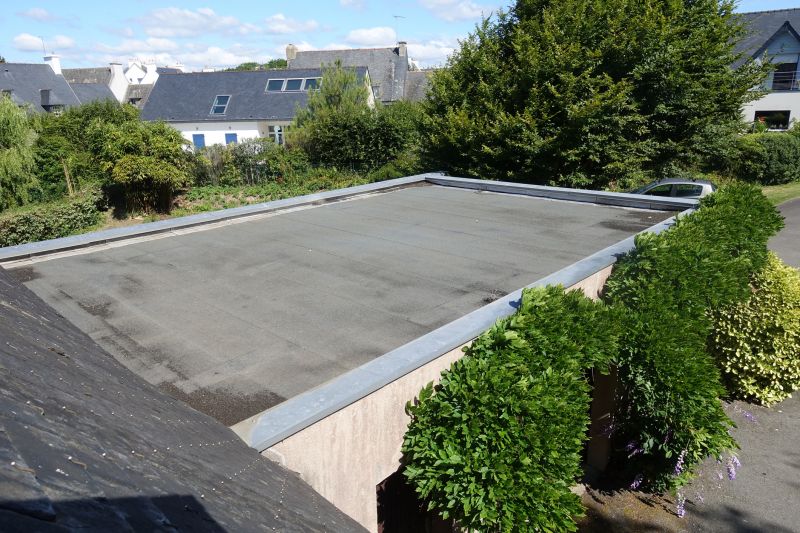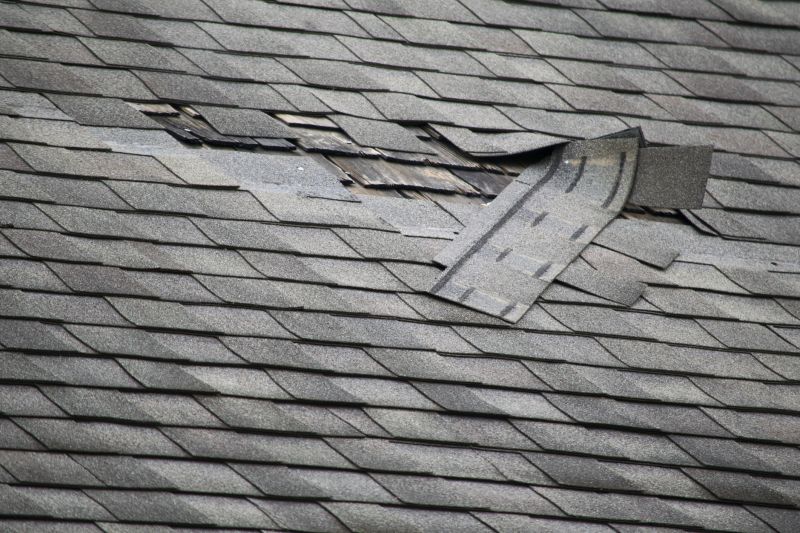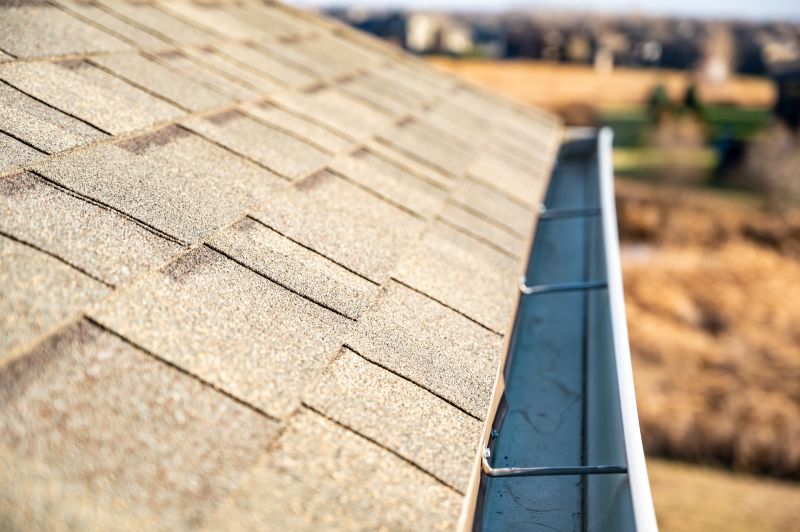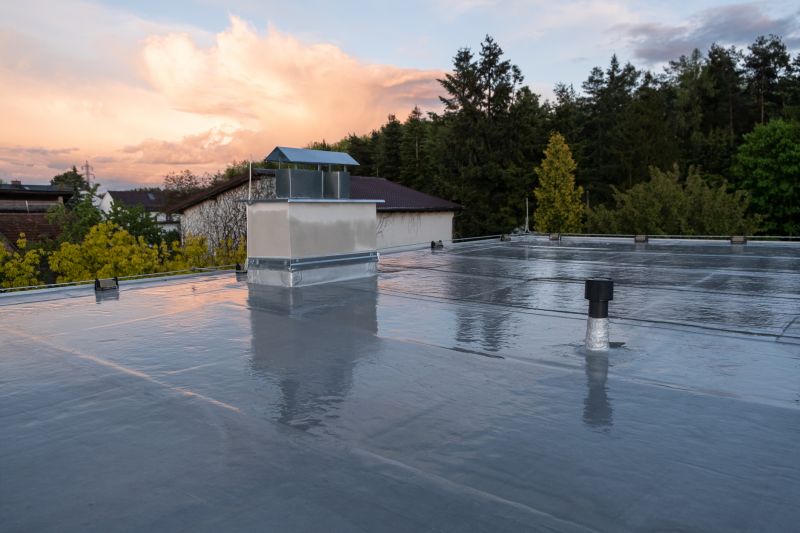Troubleshooting Roof Leaks
Shop for Troubleshooting Roof Leaks

Roof leaks can pose significant challenges for homeowners, often leading to costly damage if not addressed promptly. Understanding the common causes and potential solutions can help in effectively managing these issues. Whether it's due to age, weather conditions, or material failure, identifying the source of the leak is crucial in mitigating further damage.
In areas like Palm Springs, California, where the climate can be both hot and occasionally wet, roofs are subjected to unique stresses. The intense sun can cause roofing materials to degrade over time, while sporadic rain can lead to unexpected leaks. Regular inspections, especially after severe weather, can help in early detection of potential problem areas.
When troubleshooting roof leaks, it's essential to consider the type of roofing material in use. Different materials, such as asphalt shingles, clay tiles, or metal roofs, have distinct characteristics and vulnerabilities. For instance, asphalt shingles might crack or lose granules, while clay tiles can be prone to cracking under pressure or impact.
Homeowners should also be aware of the various signs that indicate a roof leak. These can include water stains on ceilings or walls, damp spots in the attic, or visible mold growth. Addressing these signs early can prevent more extensive water damage and mold-related health issues.
Options at a glance for addressing roof leaks include patching small areas, replacing damaged shingles or tiles, and in some cases, considering a complete roof overhaul. The choice depends on the extent of the damage, the age of the roof, and the homeowner's budget. A thorough assessment of the roof's condition can help in making an informed decision.
- Patching small leaks
- Replacing damaged shingles or tiles
- Re-sealing roof penetrations
- Installing new flashing
- Considering a roof replacement
Another factor to consider is the potential for energy savings. In Palm Springs, selecting roofing materials with reflective properties can help reduce cooling costs during the hot summer months. This consideration can influence the choice of materials when repairs or replacements are necessary.
While addressing roof leaks, it's also important to evaluate the attic's ventilation and insulation. Proper ventilation can prevent moisture build-up, which is a common cause of leaks and structural damage. Ensuring that the attic is well-insulated can also contribute to overall energy efficiency.
In summary, troubleshooting roof leaks involves understanding the specific circumstances of the roof, the materials used, and the local climate. By considering these factors, homeowners can make informed decisions that balance immediate repair needs with long-term roofing performance and energy efficiency.
Identifying Common Causes of Roof Leaks
Shop for Identifying Common Causes Roof Leaks
Understanding the Root of the Problem
Roof leaks can be a significant concern for homeowners, often leading to costly repairs if not addressed promptly. Understanding the common causes of roof leaks can help homeowners better manage and maintain their properties. In regions like Palm Springs, California, where the climate can be harsh, identifying potential issues early is crucial to preventing further damage.
One of the primary causes of roof leaks is damaged or missing shingles. Shingles can be compromised by strong winds, heavy rains, or the relentless sun that is characteristic of Palm Springs. When shingles are damaged, water can seep into the underlying layers of the roof, leading to leaks. Regular inspections can help detect these issues before they become severe.

Flashing, the material used to seal joints and prevent water penetration, can also be a source of leaks if it becomes corroded or improperly installed. Flashing is commonly found around chimneys, vents, and skylights, and its integrity is vital for preventing moisture intrusion. Homeowners should ensure that flashing is intact and well-maintained to avoid leaks.
Another common cause of roof leaks is clogged gutters. When gutters are blocked by debris such as leaves or dirt, water can overflow and seep into the roof structure. This is particularly important in areas prone to seasonal winds that can carry debris onto roofs. Ensuring that gutters are clean and free-flowing can mitigate this risk.
Ventilation issues can also lead to roof leaks. Poor ventilation can cause moisture to build up in the attic, leading to condensation and eventually leaks. Ensuring that the attic is properly ventilated can help in reducing the likelihood of moisture-related problems.
In some cases, roof leaks may stem from the natural aging of the roof materials. Over time, roofing materials can deteriorate, leading to potential leak points. Regular maintenance and timely replacement of aging roofs can prevent leaks from developing.
- Damaged or missing shingles
- Corroded or improperly installed flashing
- Clogged gutters
- Poor ventilation
- Aging roofing materials
When evaluating the causes of roof leaks, it's important to consider the specific conditions and climate of the area. In Palm Springs, the intense sun and occasional storms can accelerate wear on roofing materials. Homeowners should remain vigilant and proactive in assessing their roofs to ensure long-term durability and protection against leaks.
Choosing the Right Materials for Roof Repair
Shop for Choosing the Right for Roof Repair
Selecting Durable and Climate-Appropriate Materials
When addressing roof leaks, selecting the appropriate materials for roof repair is crucial to ensure long-lasting protection and performance. In regions like Palm Springs, California, where the climate is characterized by hot, dry summers and mild winters, the choice of roofing materials can significantly impact the durability and efficiency of your roof. Understanding the different options available and their suitability for specific weather conditions can help homeowners make informed decisions.
Asphalt shingles are a popular choice for many homeowners due to their cost-effectiveness and ease of installation. They are available in various colors and styles, making them versatile for different architectural designs. However, in hot climates, asphalt shingles may have a shorter lifespan due to prolonged exposure to high temperatures. It is important to consider shingles with high heat resistance and UV protection if opting for this material.

Clay tiles are another option frequently used in areas with warm climates. Known for their durability and natural thermal resistance, clay tiles can effectively withstand the intense sun and heat typical of Palm Springs. Their aesthetic appeal also adds a traditional touch to homes, making them a favored choice for those looking to enhance curb appeal. However, clay tiles can be heavier than other materials, necessitating a roof structure capable of supporting the weight.
Metal roofing offers a modern and durable solution for roof repairs. It is highly reflective, which can help reduce heat absorption and lower cooling costs during the hot summer months. Metal roofs are also resistant to fire and can withstand extreme weather conditions. While the initial investment may be higher than other materials, the longevity and energy efficiency of metal roofing can provide long-term savings.
For those seeking an environmentally conscious option, consider materials such as recycled shingles or cool roofing systems. These materials are designed to reduce heat absorption and improve energy efficiency. In Palm Springs, where energy conservation is a priority, cool roofing systems can be particularly beneficial in minimizing cooling costs.
- Asphalt Shingles: Cost-effective, versatile, moderate lifespan in hot climates
- Clay Tiles: Durable, thermally resistant, heavier weight
- Metal Roofing: Reflective, energy-efficient, higher initial cost
- Recycled Shingles: Eco-conscious, energy-saving, modern aesthetics
When selecting materials for roof repair, it's essential to consider factors such as climate, budget, and the architectural style of your home. Each material offers unique benefits and potential drawbacks, making it vital to weigh these aspects carefully. By choosing materials that align with the specific needs of your environment and personal preferences, you can ensure a durable and effective solution for roof leaks.



